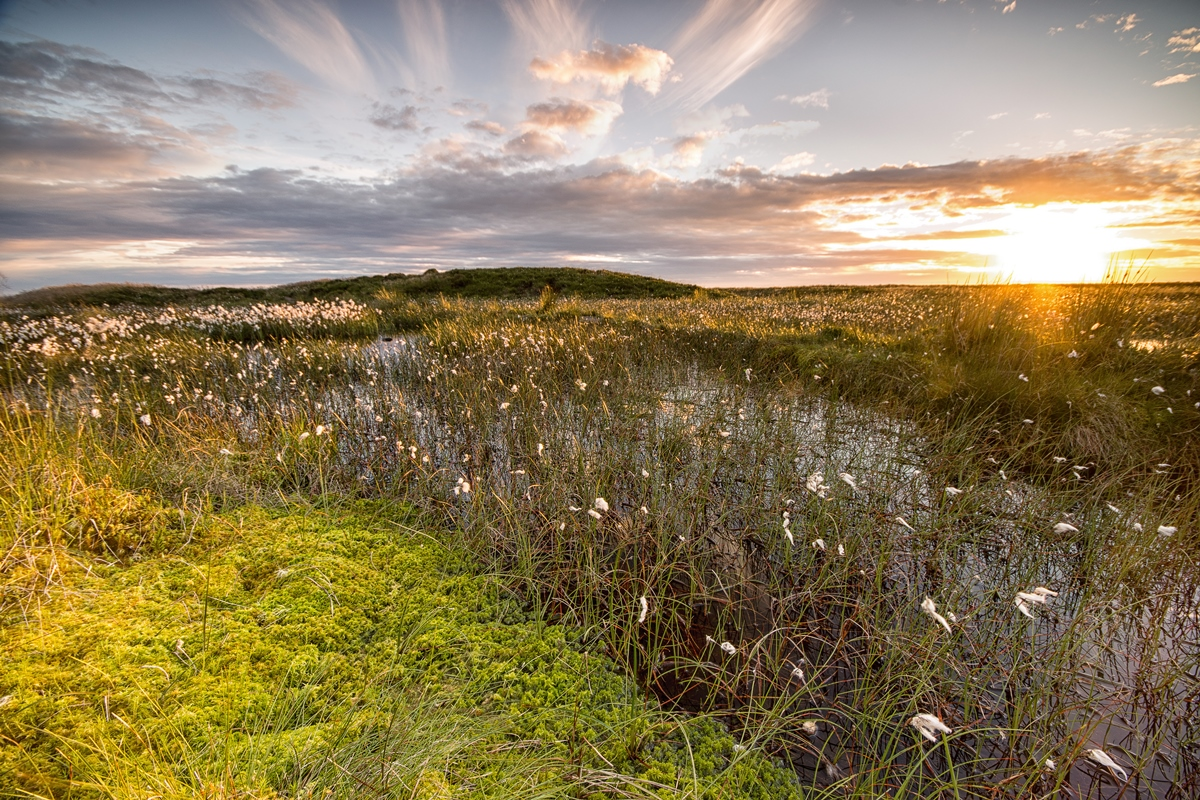Natural processes restored
Natural processes can be anything from the water cycle to the microbiology of soils. Restoring natural processes can be active, passive (for example natural colonisation of trees) and trophic (species-led, building complexity in food webs).
All methods can be used in combination. Even small measures can create mosaics and niches that add to the suitability for wildlife.
Peak District landscapes have been heavily modified over a long period of time. A range of factors have diminished the current functioning of ecology, including policies.
Some of our habitats now need heavy intervention due to their condition, for example restoring the blanket bog, but the long-term aspiration should be to reduce active management. This doesn’t mean that active ongoing conservation isn’t going to be needed.
In other areas, we can allow nature to take the lead, with management where needed. We can take inspiration from the past, but in some places we need nature to show us what it needs to thrive into the future, allowing things to move and change on the ground and over time.
We can think about grazing animals as both influencing and being influenced by their environment, helping shape habitats rather than just living in them. They are a natural part of functioning ecosystems over a large spatial scale. Grazing livestock, particularly cattle, can both act as a proxy for now-extinct large grazing herbivores, and can help replicate the historic mix of domestic and non-domestic grazing. Some sites might support a wider range of different grazing animals, some only a few. All forms of grazing animals require intervention, and people will always have a role to play as stewards of animals. Animal welfare should remain the priority, but wilder grazing could provide ways to produce food in more ecologically sensitive and less environmentally harmful ways.
# For nature
- Thinking at the process scale, not focussing on specific habitats and species, is particularly important when considering climate change and creating a resilient nature network.
- Natural processes can lead to some natural trophic restoration, for example the food chain from soils to birds of prey.
- Restoring ecosystems to a more natural state could create opportunities to reintroduce extinct species that were once native to those areas.
- Restoring the natural course of water can improve ecological and chemical water quality and allow fish to breed.
- Restoring natural processes can particularly benefit species associated with habitat mosaics and “edge habitats”.
- Grazing animals over a large area can create lots of different habitats by grazing, browsing, trampling and nutrient transfer; behaving differently and eating different things.
- Larger areas to graze over helps to manage the negative impacts of livestock, preventing small areas receiving high concentrations of nutrients from manure or excessive levels of soil disturbance.
- More natural grazing patterns can create habitats for species that don’t currently feature in the landscape, and may help species that have been lost from the Peak District to recolonise.
- Large grazing animals are important in creating intermediate disturbance. Bare ground allows seeds to grow and access to the soil for invertebrates and birds.
# What else can natural processes deliver?
Less costly intervention and management.
Restoring natural processes can lead to delivery of other public goods that we didn’t know they could deliver, for example lowering flood risk or cleaning water.
Restoring natural processes can help keep carbon locked inside soil and plants within ecosystems, limiting the amount of carbon emitted into the atmosphere.
With over 83% of people supporting making national parks wilder, (opens new window) restoring natural processes will improve visitor experiences.
Fewer inputs and reduced costs.
Grazing animals are an important part of our cultural heritage.
Agroforestry can help sequester and store carbon, and minimise soil pollution and erosion.
Restoring natural processes has an intrinsic value in itself, and can lead to unexpected benefits.

# In practice
Active intervention may be needed to reverse past or continuing degradation and may be intensive, for example restoring blanket bog. Management will be required during the restoration process.
Intervention can also be as simple as creating bare ground or planting trees.
Consider how management can be done in a more naturalistic way, including potential minimisation of human intervention.
Passively restoring natural processes is not abandonment, but should be targeted and planned. Outcomes will need to be assessed over time.
Allowing nature to take the lead, seeing what nature does, then reflecting and potentially intervening takes time. This may mean not having a set end vision.
Experiment and take risks, and change things that aren’t working.
Livestock management to maintain high standards of animal welfare.
Creating open grazing areas should be done with consideration if the field boundaries are important habitats or of particular historic landscape importance.
Landscape-scale deer and other wild animal management, where necessary, in the absence of natural predators.
Aim to achieve naturalistic grazing patterns, with some areas grazed, others less and some not at all. This can be over a large area, allowing grazing animals to range through a series of habitats at different times of year. This could be done through more traditional shepherding, or through the use of cattle collars for example. Species and densities will be different depending on each site.
Some areas might need grazing to be removed for a period of time to speed up recovery.
Consider opportunities for agroforestry (opens new window): increasing tree cover in areas in use for farming. This can include integrating trees to areas used for livestock, creating more hedgerows and buffer strips, and producing food in woodlands.
Ongoing interventions to mimic natural processes may be required where they cannot be fully restored.